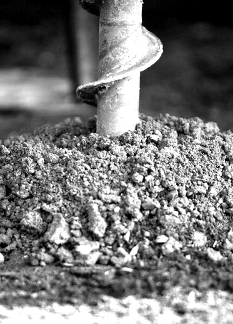Arrow gas plan questioned
 An independent report has raised concerns about the risk of drilling new gas wells near contaminated land.
An independent report has raised concerns about the risk of drilling new gas wells near contaminated land.
Gas company Arrow Energy has lodged an application to drill hundreds of gas wells near the contaminated Linc Energy underground coal gasification plant.
Arrow wants to sink 280 coal seam gas (CSG) wells and build 440 kilometres of pipelines near the contaminated Linc Energy underground coal gasification (UCG) plant in southern Queensland.
Linc Energy was fined $4.5 million for serious environmental harm it caused at its experimental UCG site near Chinchilla, where coal was set alight deep underground to create a gas that is collected at the surface.
The company mismanaged the underground fires, causing contaminants such as benzene and naphthalene to be released into the soil, air and groundwater.
There is a 10-kilometre no-go-zone around the Linc site. However, Arrow wants to resume mining in the area for CSG.
An independent report commissioned by the Queensland Department of Environment and Science says Arrow has used some “unduly optimistic estimates” in its proposal. The report said the company had not proved that drilling and depressurisation of underground coal will not cause contamination to spread beyond the former Linc Energy site.
It also questioned groundwater modelling used by Arrow Energy, saying its model “may misrepresent the groundwater flow directions”.
The report said Arrow Energy had not clearly considered both gas and water pressures in its groundwater modelling.
The company was also criticised for relying on information from a single monitoring bore to estimate the hydraulic connectivity between ground formations.
“The underlying geological model is a necessary simplification of a highly complex system and it is considered likely that there will be residual contaminants will remain outside of the gasifiers,” the report said.
“Consequently Arrow's conclusion that there will be no off-site contaminant migration may be incorrect.”
Arrow Energy says the report “largely agrees” with its “modelling on groundwater flow rate, contaminant fate and transport modelling, and that there is little risk of gas migration from the site”.
Former senior Queensland government water manager Tom Crothers, who now works as a private consultant, said the report raises more questions than answers.
“It [the report] is enough to say there are a number of issues which still need to be resolved,” he told the ABC.
“Under the precautionary principle for ecologically sustainable development, the Queensland government should not be giving approval if there's any level of uncertainty as to those impacts.
“If you get mobilisation and transport of those nasties [contamination] from the Linc [Energy] trial, potentially they will contaminate their groundwater supplies.”
More details are available here.







 Print
Print